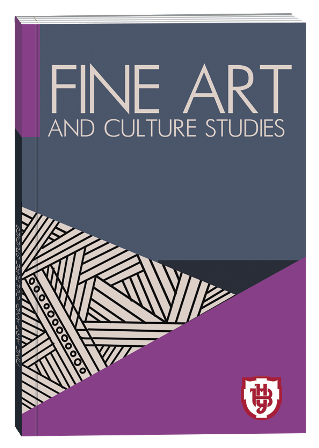PEDALIZATION IN THE WORK OF A PIANIST: A STYLE APPROACH
DOI:
https://doi.org/10.32782/facs-2025-4-5Keywords:
pedal, pedaling, pianist, performance process, musical works of different stylesAbstract
The article is devoted to the problem of using pedalization according to the style direction. Research objective. To identify and theoretically substantiate the features of the use of pedalization in the works of composers of different stylistic directions. The methodology of the research is based on systematic analytical and comparative methods. The scientific novelty lies in determining the specifics of pedalization through a comparison of its application in different stylistic directions, taking into account the evolution of musical instruments. Conclusions. Pedalization plays a significant role in ensuring the interaction of the leading components of musical texture. The function of the pedal depends on both the texture, style and artistic image of a musical work. Pedalization is a creative and mandatory component of the pianist’s performance process. The study examines the specifics of pedalization in the interpretation of works of the Baroque era (I. S. Bach), Viennese classics (J. Haydn, V. A. Mozart, L. Beethoven), and romantic composers (F. Chopin, F. Liszt). The functions of the right and left pedals in piano performance and the factors of its comprehensive application (author’s instructions, style and genre of the work, elements of musical language – tempo, agogics, dynamics, strokes, articulation, register, nature of pauses, specifics of the instrument’s sound and room acoustics) are determined. The ability to pedal depends largely on the understanding of the appropriateness of using pedaling in a piece of a particular style and the ability of the applicant to aural control. Pedaling should be subtly differentiated by the performer’s hearing and feeling, since there is a fine line of gradations between “yes” and “no” (accurate – inaccurate, correct – incorrect, stylish – unstylish, etc.). The action of pedaling mastery should be cultivated, in the entire pianistic complex, and directed towards an artistic goal. The ability to pedal is practiced in the process of mastering works of different genres and styles.
References
Billeter B. Die Verzierungen bei Johann Sebastiann Bach. Zürich, Schweizer music pädagogische Blätter, 76. Jg., 1987. № 1. Pp. 27–33
Виноградча, Д. В. Лебедкіна І.Є. Роль педалі у фортепіанному мистецтві ХVIII-XX століть. «Молодий вчений». № 11 (51), 2017. С. 525-528
Грінченко А. Особливість формування виконавсько-стильових умінь майбутніх викладачів музичного мистецтва в процесі фортепіанної підготовки. Актуальнi питання гуманiтарних наук. Вип. 67, том 1, 2023 С. 111-117
Корзун В. Художня інтерпретація музичних творів як вищий щабель виконавської майтерності. Наукові записки Національного педагогічного університету ім. М.П. Драгоманова. 2014. Вип. 120. С. 74-79.
Коцюрба Н., Дуда С. Особливості застосування педалі у роботі концертмейстера: Перспективи розвитку науки, освіти та технологій в євроінтеграції. Полтава: ЦФЕНД, 2022. С. 36-38.
Кръстева М. Изпьлнителски принципи при старите клавишни инструмент – родство и врьзка сьс сьвременния пианизьм. София : Хайни, 2016. 116 с
Москаленко В. Лекції з музичної інтерпретації. Навчальний посібник. Київ 2013. 250 с.
Негребецька О. М. Педалізація в роботі над творами у класі фортепіано. Наукові записки КДПУ. Серія: Педагогічні науки. Кіровоград : КДПУ ім. В. Винниченка, 2015. Вип. 139. С. 154-158.
Таран І. Значення динаміки у фортепіанних творах. Наука України: проблеми сьогодення та перспективи розвитку : матеріали ІІІ Міжнародної науково-практичної конференції (Київ, 23–24 вересня 2016р.). Інститут освітньої та молодіжної політики. Київ. 2016. С. 32–34.
Шукайло В. Ф. Шлях до майстерності піаніста: навчально-методичний посібник. Запоріжжя : Запорізький національний університет, 2017. 206 с.








